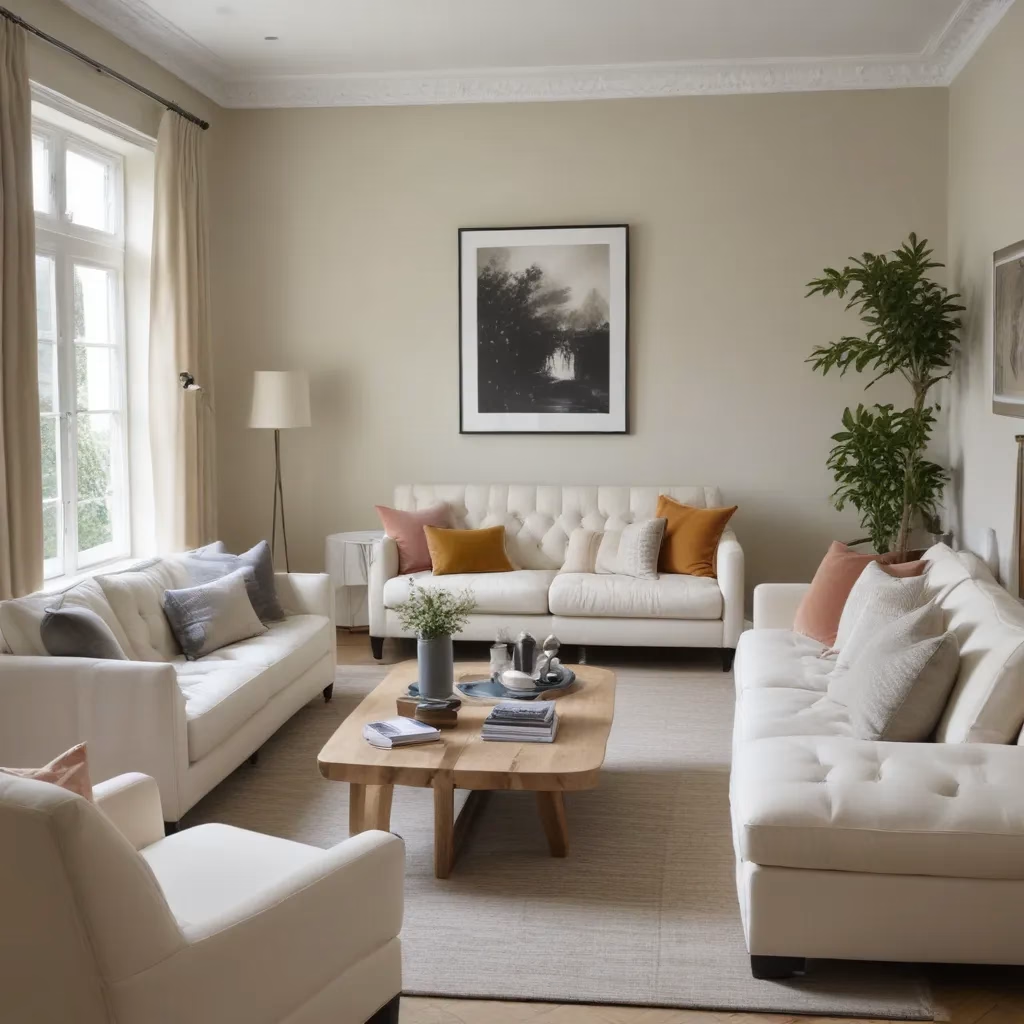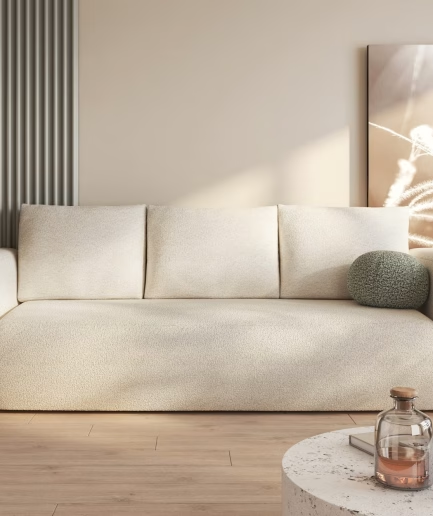
Reviving Worn Upholstery on a Budget in Diminutive Dwellings
Whether you’re a minimalist renter or a downsizing homeowner, working with limited square footage doesn’t have to mean sacrificing style or comfort. With some clever upholstery restoration and savvy décor strategies, you can breathe new life into tired furnishings and create a cozy, personalized haven—even in the coziest of spaces.
Now, this might seem counterintuitive…
Fabric and Upholstery Selection
The foundation of any inviting living room is a well-chosen sofa, lovingly cared for over the years. But what if your trusty couch has seen better days? Before rushing out to replace it, consider giving the upholstery a refresh.
Choosing Durable Upholstery Fabrics
When it comes to upholstery, quality and longevity should be your top priorities—especially for small spaces where furnishings see heavy use. Look for tightly-woven, double-rub fabrics like polyester, microfiber, or even treated cotton that can withstand frequent sitting, petting, and the occasional spill. Avoid delicate silks or loose weaves that will quickly show wear.
If your budget allows, investing in performance fabrics with built-in stain, fade, and abrasion resistance can pay dividends in the long run. Many performance textiles today are just as soft and stylish as traditional upholstery options.
Patterns and Textures for Small Spaces
Once you’ve selected a durable fabric base, think about how the pattern and texture will visually impact your compact room. Solid, neutral upholstery can create a serene, cohesive feel, while small-scale prints and woven textures add visual interest without overwhelming the space.
Avoid large, busy patterns that can make a room feel cluttered. Stick to subtle, tonal designs or geometric motifs that flow seamlessly with your existing decor. For an extra layer of coziness, incorporate soft, nubby fabrics like velvet or chenille.
Coordinating Upholstery with Room Decor
When selecting new upholstery, think about how it will harmonize with the rest of your living room. Choose a palette that complements your wall color, flooring, and accent pieces. If you have existing furniture or decorative elements you love, build your upholstery choices around those.
Don’t be afraid to mix patterns and textures—just be sure to maintain a cohesive color story. A neutrally upholstered sofa, for example, can provide a versatile backdrop for coordinating throw pillows, rugs, and other textiles.
Living Room Layout Tips
Once you’ve given your sofa a facelift, it’s time to consider how to best arrange your living room to maximize both form and function.
Maximizing Seating in Compact Layouts
In small spaces, every square foot counts. Look for modular or sectional sofas that can be configured to fit your room’s dimensions. Sleek, armless designs and compact loveseats also help you squeeze in extra seating without overwhelming the area.
Pair your primary sofa with accent chairs, poufs, or even a lovingly refurbished vintage chair to create a cozy conversation nook. Mixing different seating styles and scales can add visual interest while providing ample places for guests to gather.
Multifunctional Furniture Arrangements
When space is limited, look for ways to make every piece work double-duty. An ottoman or storage ottomans, for instance, can serve as a coffee table, extra seating, or a place to stash extra throws and pillows.
Nesting or drop-leaf tables are also handy for small-space living, allowing you to expand your surface area as needed. And don’t forget about wall-mounted shelves, which can provide display and storage space without encroaching on precious floor area.
Space-Saving Sofa Alternatives
For the tiniest of abodes, a traditional sofa may simply take up too much real estate. Look for alternative seating options that offer a similarly cozy feel, such as a stylish daybed, loveseat, or even a pair of matching armchairs.
Modular sectional sofas with chaise components allow you to configure the perfect fit for your room. And don’t overlook the humble futon—today’s models come in a wide range of stylish, convertible designs that seamlessly transition from sofa to sleeper.
Sofa Cleaning and Maintenance
No matter how carefully you maintain your upholstery, regular wear and tear is inevitable. Luckily, a few simple tips can keep your sofa looking and feeling fresh for years to come.
Gentle Cleaning Methods
When it comes to cleaning upholstery, less is often more. Avoid harsh chemicals or vigorous scrubbing, which can damage delicate fabrics. Instead, spot clean spills and stains as soon as possible with a mild, water-based cleaner. Always test on a small, inconspicuous area first.
For routine maintenance, regularly vacuum your sofa using the upholstery attachment, and gently brush the fabric with a soft-bristle brush to lift dirt and debris. This helps preserve the fabric’s texture and appearance.
Protecting Fabrics from Wear
To extend the life of your upholstery, rotate and flip cushions regularly. This evens out wear patterns and prevents flattening. You can also protect high-traffic areas by placing throws or slipcovers over the arms and seat.
When not in use, keep your sofa out of direct sunlight, which can cause fabrics to fade over time. And be mindful of pets, kids, and other household factors that may contribute to premature wear.
Extending Sofa Lifespan
If your sofa’s cushions have lost their plumpness or the fabric has become visibly worn, don’t despair. With a bit of DIY elbow grease, you can breathe new life into tired upholstery.
Start by giving the cushions a refresh. Remove the covers and have them professionally cleaned, or invest in new high-density foam inserts to restore that “just-purchased” plushness. For minor tears or holes, you can often stitch or patch the fabric yourself.
For more extensive damage or a complete style overhaul, consider reupholstering the entire sofa. While this is a bigger investment, a skilled upholsterer can transform an outdated piece into a showpiece that fits your evolving design aesthetic.
Styling for Comfort and Aesthetics
Once your sofa is clean, comfortable, and in tip-top shape, it’s time to turn your attention to the finishing touches that will make your living room a true haven.
Creating a Cozy Ambiance
Layers of soft, inviting textures are key to crafting a cozy, lived-in feel—even in compact quarters. Drape plush throws over the back of your sofa and scatter an assortment of accent pillows in complementary patterns and materials.
Thoughtful lighting also plays a crucial role in setting the mood. Incorporate a mix of ambient, task, and accent lighting, using dimmers to create a warm, intimate glow. Strategically placed floor lamps, table lamps, and recessed lighting can make a small space feel infinitely more inviting.
Personalizing Small-Space Decor
While minimalism has its merits, don’t be afraid to infuse your living room with personal touches that reflect your unique style. Incorporate cherished vintage or thrifted pieces, such as a reclaimed wood side table or a reupholstered armchair.
DIY upholstery projects are another great way to put your stamp on a space. With some fabric, foam, and a little elbow grease, you can transform an old ottoman or chair into a one-of-a-kind centerpiece.
Complete the look with a selection of artwork, plants, and other accessories that speak to your design sensibilities. Just be mindful of scale and avoid overcrowding—a few carefully chosen pieces can have a bigger impact than a cluttered collection.
Furniture Buying Guides
Whether you’re in the market for a brand-new sofa or simply seeking to upgrade your existing one, navigating the world of upholstery can be a daunting task. Keep these key considerations in mind to find the perfect fit for your compact space.
Evaluating Sofa Size and Fit
When shopping for a new sofa, measure your living room carefully to double-check that the piece you choose will fit comfortably without overwhelming the space. Pay close attention to the sofa’s overall dimensions, as well as the depth of the seat and the height of the arms.
Modular or sectional sofas offer greater flexibility, allowing you to configure the layout to suit your specific needs. And don’t forget to account for walkways, door clearance, and any other obstructions that could impact placement.
Budgeting for Upholstery Upgrades
If your current sofa is structurally sound but the upholstery is showing its age, reupholstering may be a more cost-effective option than purchasing a brand-new piece. Consider the quality of the frame, springs, and other internal components—a well-built sofa is worth preserving.
When budgeting for reupholstery, factor in the cost of the fabric, labor, and any necessary repairs or upgrades. While professional services can be pricey, the end result is often worth the investment. You can also explore DIY or semi-DIY upholstery projects to save on costs.
If you do decide to buy a new sofa, shop secondhand or outlet stores for high-quality pieces at a fraction of the retail price. Just be sure to thoroughly inspect the upholstery and construction before making a purchase.
Whether you’re reviving a well-loved family heirloom or starting from scratch, with some creative thinking and a bit of elbow grease, you can transform your living room into a cozy, personalized haven—no matter the size of your space. Happy decorating!
Tip: Rotate cushions regularly to maintain even wear




